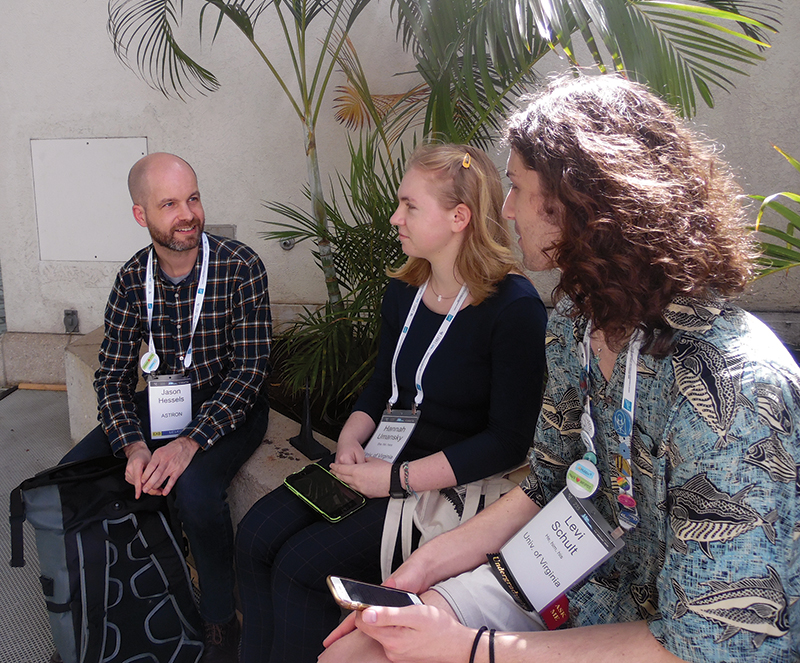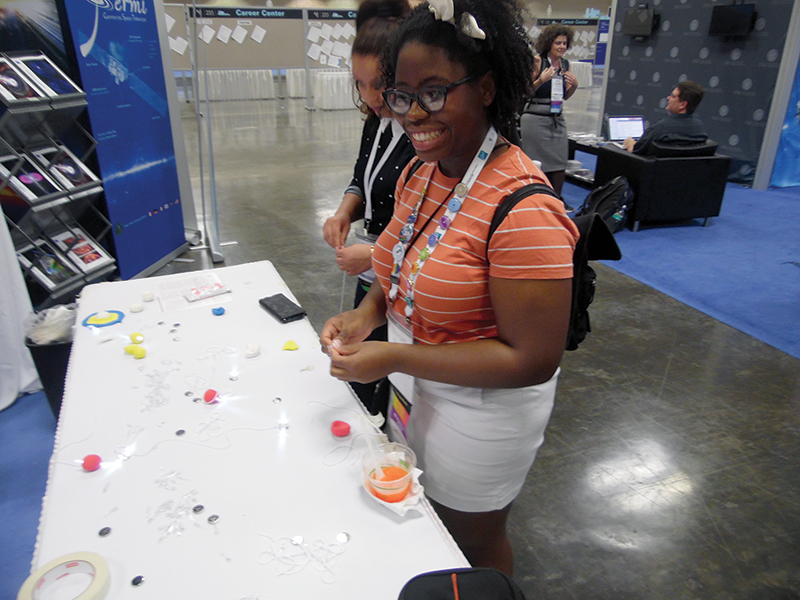Forging a Path to the Stars
Forging a Path to the Stars
235th Winter Meeting of the American Astronomical Society
How can aspiring astronomers build careers in such a broad and dynamic field? At the 2020 American Astronomical Society meeting in Honolulu, Hawaii, we discovered that the road to success isn’t always a straight one. Amid a whirlwind of overlapping exhibits, events, workshops, and plenary talks, we went off-schedule, overcame anxiety, and became inspired to merge passions. Along the way, we caught up with speakers who shared some advice for those just starting out.
For Creative Inspiration, Read Widely, by Hannah Umansky
Dr. Jason Hessels—a researcher at ASTRON, the Netherlands Institute for Radio Astronomy, and a professor at the University of Amsterdam—researches fast radio bursts, bright radio sources that emit for only milliseconds at a time. During a plenary session, Hessels explained how these bursts can be used to study the intergalactic medium, the ionized material between galaxies. After the lecture, we sat down with Hessels and asked how he got his start in fast radio bursts.
“I spent most of my PhD searching for millisecond pulsars . . . [and] a lot of the techniques are very similar to what you need to search for fast radio bursts,” Hessels said. He recommended that students hoping to continue in research always check arXiv (arxiv.org) and read newly released papers from both inside and outside their field of study.
“Being able to put your results into context and understanding the links to other things is ... a prerequisite for having the creativity to do something very interesting, instead of just turning the crank on something people have done before,” Hessels told us.
Everyone’s Path Looks Different, by Morgan Waddy
On the last day of the conference we caught up with astrophysicist Sheperd S. Doeleman, founding director of the Event Horizon Telescope project (EHT), after his plenary. He was an interesting person—for example, we learned that after receiving a bachelor of arts degree, he spent a year conducting experiments at McMurdo Station in Antarctica.
We talked with him about the things he was most excited about surrounding EHT—a global network of radio telescopes. He told us that EHT isn’t a “first-light instrument,” and that with the progression of time and the addition of more antennas, the resolution of the instrument only increases.
Since Doeleman had such an interesting journey to his current position, we asked if he had any advice for young astrophysicists. He drove home to us that everyone’s path looks different. His work, he said, wasn’t amazing out of the gate, but once he found his niche he was able to make up for lost time. His other advice? Recognize good opportunities when they present themselves—because they’re seldom offered again.
Keep an Open Mind, by Levi Schult
After the NANOGrav (North American Nanohertz Observatory for Gravitational Waves) session, we interviewed Dr. Xavier Siemens—a physics professor at Oregon State University—and asked if he had advice for early-career astronomers.
“Keep an open mind about what you might be interested in,” he said. “For a long time I thought I was only interested in cosmology . . . and later I discovered that there are actually a lot of interesting other things that you can do.”
Siemens worked in cosmology before transitioning to gravitational wave work in LIGO and then NANOGrav. This shift wasn’t initially by choice. He explained that he couldn’t find a postdoctoral position in cosmology but was able to find one in gravitational waves. He kept an open mind and ended up enjoying it supremely!
Hannah Umansky and Levi Schult (far right) interview researcher Jason Hessels of the Netherlands Institute for Radio Astronomy. Photo by Morgan Waddy.
Morgan Waddy makes a clay pulsar. Photo by Levi Schult.
